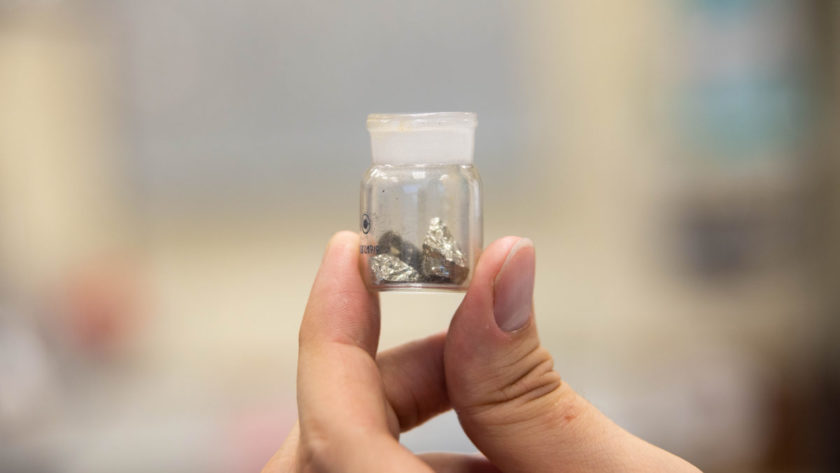Scientists at Ural Federal University have found a “solvent”, a surfactant, specifically lignosulfonate, which promotes the dissolution of valuable metals. Lignosulfonate is a waste product of pulp and paper production; it is cheap and non-toxic. Scientists have thus solved two serious problems at the same time: utilization of waste product and processing of ores and concentrates. Description of the mechanism of action of the surfactant in the conditions simulating the processes of autoclave leaching has been published in the journal Langmuir. The work was supported by the Russian Science Foundation (project number 22-79-10290).
“We investigated the mechanism of action of a surfactant very complex in structure, which is simultaneously a wetting agent, dispersant and stabilizer in relation to the surface of the ore concentrate. This surfactant, lignosulfonate, has been used in autoclave metal extraction since the 1970s. However, its efficiency has not been studied sufficiently, nor has the mechanism of action been studied subjectively. And given that today poor ores, ores of double and triple stiffness are involved in processing, the use of surfactant for processing of such ores becomes even more relevant,” says Tatiana Lugovitskaya, co-author of the project and Senior Researcher at the Laboratory of Advanced Technologies for Complex Processing of Mineral and Technogenic Raw Materials of Non-Ferrous and Ferrous Metals at UrFU.
The scientists studied all stages of the surfactants’ action in the leaching of concentrates in autoclave conditions. This is important for understanding and will help, on the one hand, to control the process of extraction of valuable metals – zinc, copper, lead and others. On the other hand, it will help to regulate the effectiveness and expand the range of surfactants.
“The technology of extraction of valuable metals from ores is multistage. Different processes take place at different stages of processing, and in some cases surfactants are effective, but in other cases they are not and we have to increase their dosage, which has a negative effect on the final commercial product. In addition, elemental sulfur is released during leaching, which slows down the process and forms diffusion films. We managed to find out why this surfactant acts differently at different stages. This allows us to regulate the process of extraction of metals into solution, to make it more effective and less expensive. In addition, knowledge of the mechanism opens up new possibilities for development of more complex compositions consisting of several surfactants, thus making it possible to further increase the efficiency of metal extraction,” says Tatiana Lugovitskaya.
It should be noted that technologies of extraction of non-ferrous metals from complex ores are being developed today all over the world. In the past, metal-rich ores were mined, but today the reserves of such ores are exhausted. And industrial companies face the problem of processing poor and difficult to enrich ores. And one of the trends that are being developed in the world is the use of various surfactants. Surfactant-assisted leaching technologies are being actively developed in Canada, China and South Africa. Russia is developing this technology as well. The Ural-born surfactant-assisted mineral processing technology will help process ores from Russia, Kazakhstan, Mongolia, and Uzbekistan with a high degree of extraction of non-ferrous, precious, and rare metals.
Lignin is a complex polymeric compound found in all types of terrestrial plants. Lignosulfonate is a derivative of lignin, a product of technological processing of plant wood raw materials at pulp and paper mills. Lignosulfonate is non-toxic, has no irritant and allergic effect, according to the Russian classification belongs to the lowest class of hazard.
Surfactants are chemical compounds that are adsorbed on the phase (body) interface and form a highly concentrated layer on it (adsorption layer). Surfactants are used or present in almost all areas of industrial activity and consumption. Trade names and brands of industrial surfactants and compositions based on them number in the thousands. For example, synthetic surfactants are the main active ingredient in detergents, shampoos, and cosmetics. Food surfactants are used to improve the consumer properties of confectionery, bakery and dairy products.

